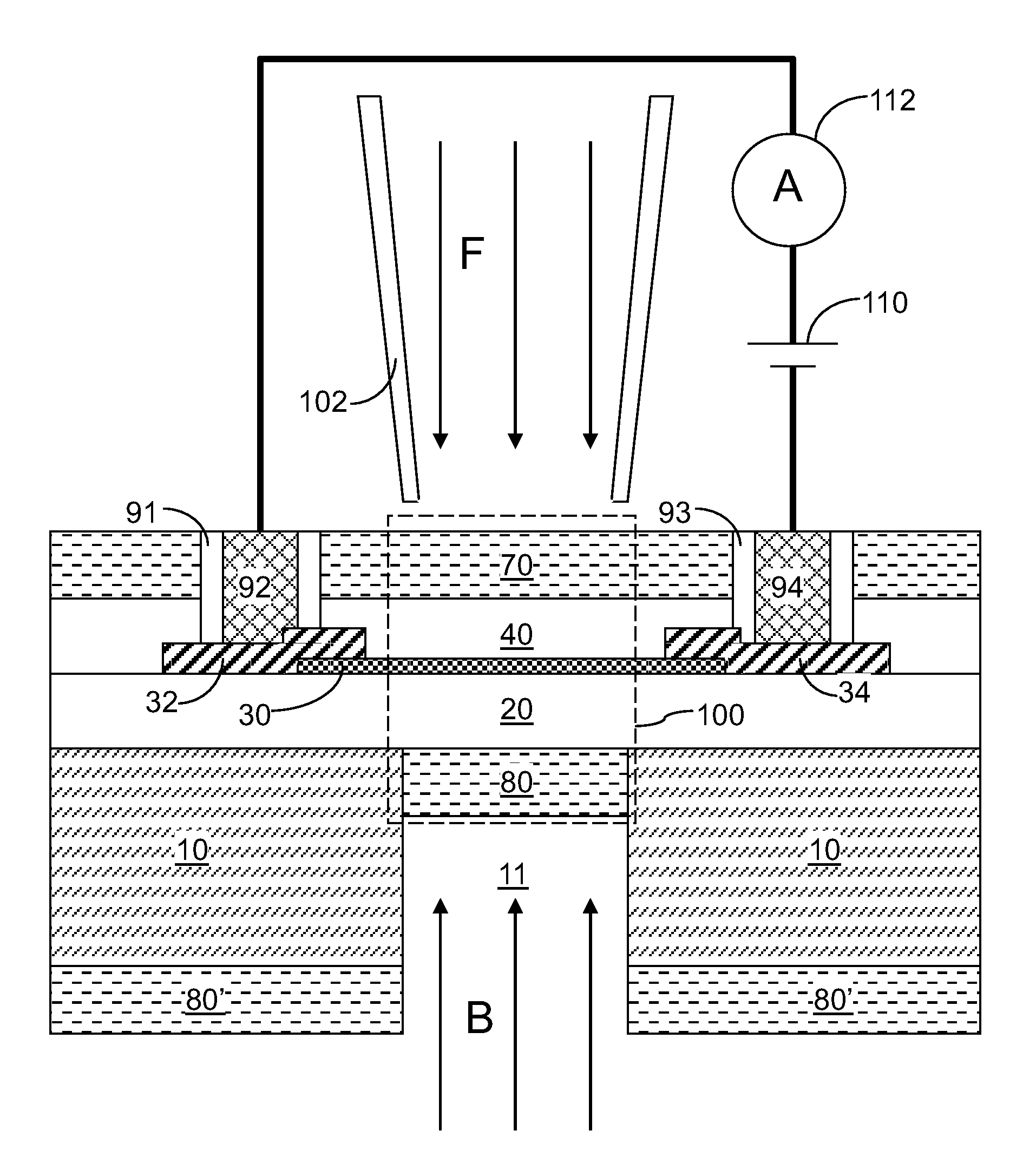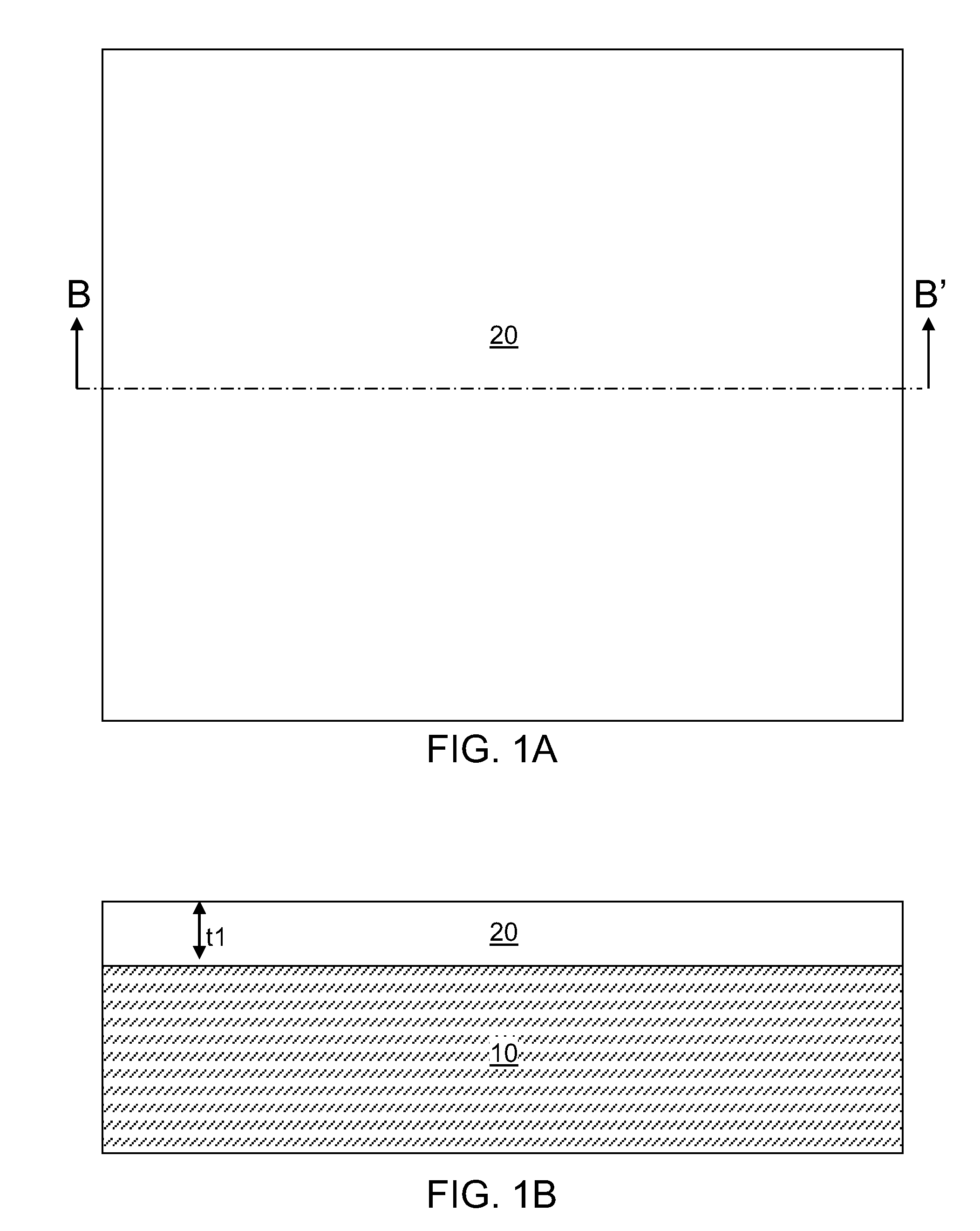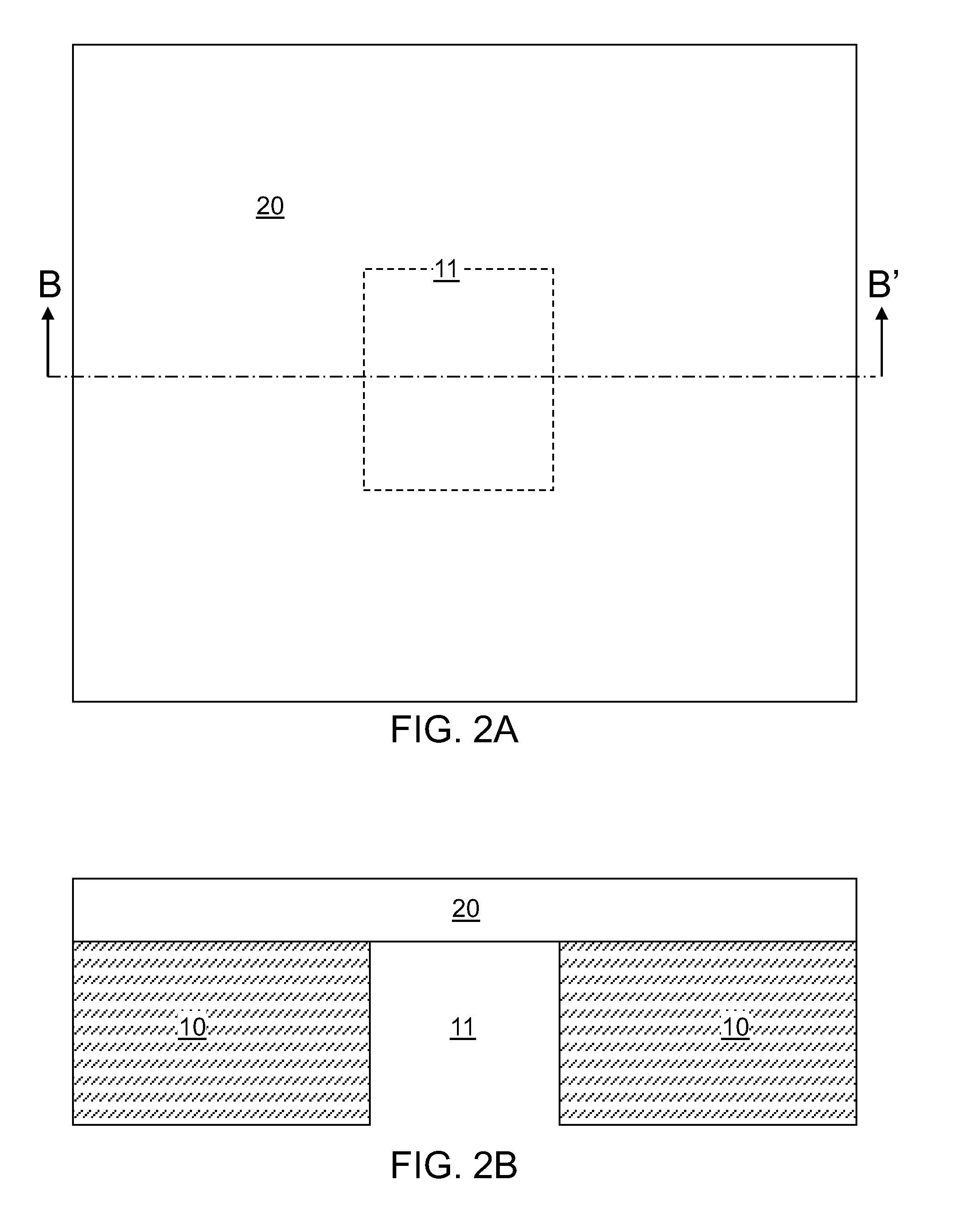Optoelectronic device employing a microcavity including a two-dimensional carbon lattice structure
a technology of optoelectronic devices and microcavities, applied in the direction of electric variable regulation, process and machine control, instruments, etc., can solve the problems of limited switching speed large device footprint of current optoelectronic devices based on silicon and group iii-v semiconductor compounds, and inability to operate in the terahertz regim
- Summary
- Abstract
- Description
- Claims
- Application Information
AI Technical Summary
Benefits of technology
Problems solved by technology
Method used
Image
Examples
first embodiment
[0043]Referring to FIGS. 1A and 1B, a first exemplary structure according to the present disclosure includes a substrate 10. The substrate 10 can include a conductive material, an insulator material, a semiconductor material, or any solid material provided that the substrate 10 can provide structural support to layers to be subsequently formed.
[0044]A first transparent layer 20 having a first thickness t1 is formed on the top surface of the substrate 10. The first transparent layer 20 includes a material that is optically transparent within a wavelength range, which is herein referred to as a first transparent wavelength range. The first transparent layer 20 can be formed, for example, by chemical vapor deposition, physical vapor deposition, vacuum evaporation or evaporation at subatomic pressure, atomic layer deposition, spin coating, layer transfer and bonding from another substrate, or a combination thereof. The first transparent layer 20 has a first refractive index of n1.
[0045]...
third embodiment
[0093]Referring to FIG. 13, the first bias and switching circuit of the third exemplary structure can be replaced with a second bias and switching circuit to provide a fourth exemplary structure. In the second bias and switching circuit, the DC voltage bias source 130 in the first bias and switching circuit is replaced with an alternating current voltage bias source 140, which applies an alternating current (AC) voltage bias across the at least one graphene layer 30 instead of a DC voltage bias. The amplitude of the AC voltage bias can be from 0.1 V to 100 V, and the frequency of the AC voltage bias can be from 1 Hz to 1 THz, although lesser and greater amplitudes and frequencies can also be employed. The fourth exemplary structure can be employed as an electromagnetic radiation emitter as in the
[0094]Referring to FIG. 14, a fifth exemplary structure is derived from the first exemplary structure of FIGS. 9A and 9B by connecting a bias and signal amplification circuit. The bias and s...
sixth embodiment
[0098]Referring to FIGS. 15A and 15B, a sixth exemplary structure according to the present disclosure can be derived from the first exemplary structure of FIGS. 2A and 2B by placing at least one carbon nanotube 230 on the first transparent layer 20 in lieu of at least one graphene layer 30. If the at least one carbon nanotube 230 is a plurality of carbon nanotubes, the plurality of carbon nanotubes can be aligned employing any method known in the art. Subsequently, processing steps of FIGS. 4A, 4B, 5A, 5B, 6A, 6B, 7A, and 7B can be performed to provide the sixth exemplary structure illustrated in FIGS. 16A and 16B.
[0099]Processing steps of FIGS. 8A, 8B, 9A, 9B, and 10 can be subsequently performed to provide the sixth exemplary structure of FIG. 17. The sixth exemplary structure of FIG. 17 is an electromagnetic radiation detector having the same operational principle as the electromagnetic radiation detector of FIG. 10 except for the difference of employing at least one carbon nanot...
PUM
| Property | Measurement | Unit |
|---|---|---|
| refractive index n1 | aaaaa | aaaaa |
| refractive index n1 | aaaaa | aaaaa |
| thickness t1 | aaaaa | aaaaa |
Abstract
Description
Claims
Application Information
 Login to View More
Login to View More - R&D
- Intellectual Property
- Life Sciences
- Materials
- Tech Scout
- Unparalleled Data Quality
- Higher Quality Content
- 60% Fewer Hallucinations
Browse by: Latest US Patents, China's latest patents, Technical Efficacy Thesaurus, Application Domain, Technology Topic, Popular Technical Reports.
© 2025 PatSnap. All rights reserved.Legal|Privacy policy|Modern Slavery Act Transparency Statement|Sitemap|About US| Contact US: help@patsnap.com



